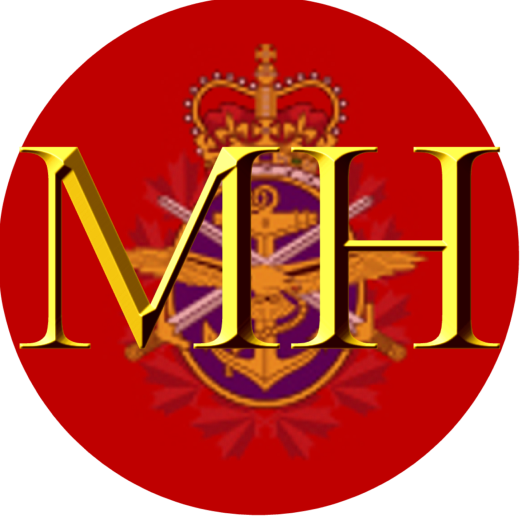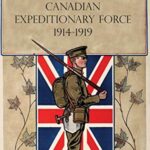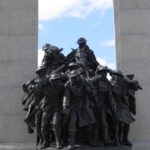In the long sweep of Canada’s military history, the nation’s armed forces have played an essential role in shaping the country’s identity and standing on the world stage. The story of Canada’s military is one of gradual evolution, from a collection of colonial militias into a modern, professional force capable of defending the country’s sovereignty and contributing to global peace and security. Just as importantly, it is a story defined by the land, the seas, and the skies—each giving rise to Canada’s Army, Navy, and Air Force.
The Roots of a Military Tradition
Canada’s military origins lie deep in the soil of colonial North America. From the earliest days of French settlement in the 17th century, militia forces were the backbone of defense in New France. These militias, composed of ordinary settlers, were called upon to defend their communities against Indigenous nations, rival European colonies, and the wilds of the land itself. The British, after wresting control of Canada from the French in 1763, inherited these militia traditions and maintained them as the primary means of local defense.
In these early years, the Canadian military was not a formalized force but a reactive, often ragtag collection of volunteers drawn from local populations. Nevertheless, it was during the War of 1812 that these militia forces—alongside British regulars and Indigenous allies—demonstrated their resolve. They successfully defended British North America from multiple American invasions, with battles such as Lundy’s Lane and Châteauguay becoming celebrated symbols of early Canadian military resilience.
The Birth of a National Army
By the mid-19th century, as Canada edged towards Confederation, it became clear that a more structured military presence was required. The formation of the Dominion of Canada in 1867, though initially focused on political unity and economic development, also underscored the need for a standing army. Canada’s wide-open borders and the lingering threat of American expansionism necessitated this change.
In 1871, with the withdrawal of British troops from Canadian soil, Canada took its first steps towards building its own defense force. The Militia Act of 1868 provided the framework for a national military structure, establishing both a small Permanent Active Militia and a larger Non-Permanent Active Militia that could be called upon in emergencies. But Canada’s professional military was still in its infancy, with its capabilities limited by both size and budget.
The turning point came with the Boer War (1899–1902), when Canada deployed troops overseas for the first time as part of the British Empire’s broader efforts. Though still relatively small in scope, this involvement marked the moment when Canada began to assert itself on the global stage. More importantly, it demonstrated the need for a more robust and professional military establishment, one that could serve both at home and abroad.
The Formation and Growth of the Canadian Army
The First World War transformed Canada’s military. When war broke out in 1914, Canada had no standing army of its own; instead, it relied on its militia structure. But within four years, that would change dramatically. The Canadian Expeditionary Force (CEF), hastily assembled and initially untested, grew into one of the most formidable fighting forces of the war. Battles such as Vimy Ridge in 1917 demonstrated the capabilities of the Canadian Army, earning it a reputation as an elite unit within the British Empire.
After the war, the Canadian Army was formalized as a permanent standing force, with a structure reflecting its newfound professionalism. The interwar years saw significant developments, including the establishment of military colleges and training programs designed to create a professional officer corps. The outbreak of the Second World War in 1939 found Canada better prepared than it had been in 1914, and the Canadian Army played a central role in key operations, including the liberation of the Netherlands and the D-Day landings at Juno Beach.
The Origins of the Royal Canadian Navy
While Canada’s army grew out of a colonial militia tradition, the Royal Canadian Navy (RCN) was born of necessity in the early 20th century. The British Royal Navy had long provided maritime defense for Canada, but by the turn of the century, pressure was mounting for Canada to assume greater responsibility for its own defense. In 1910, the Naval Service Act established the Royal Canadian Navy, marking the birth of Canada’s naval force.
Initially, the RCN was a modest force, consisting of just two ships—the HMCS Rainbow and the HMCS Niobe—both of which had been acquired from the Royal Navy. Nevertheless, the creation of the navy signaled Canada’s growing desire for independence in matters of defense, even as it remained tied to the British Empire.
During the First World War, the RCN played a limited role, primarily focusing on coastal defense. It wasn’t until the Second World War, however, that the RCN came into its own. Tasked with escorting convoys across the treacherous North Atlantic, the Canadian Navy quickly expanded, becoming one of the world’s largest navies by the war’s end. The Battle of the Atlantic was the navy’s defining campaign, and its success in keeping supply lines open to Britain was a crucial factor in the Allied victory.
The Birth of the Royal Canadian Air Force
The final element of Canada’s military trifecta—the Royal Canadian Air Force (RCAF)—came into being in 1924, though its roots can be traced back to the First World War. Canadian pilots had served with distinction in the British Royal Flying Corps during the war, and their exploits in the skies, including those of famous aces like Billy Bishop, underscored the need for a national air force.
In its early years, the RCAF was primarily focused on civil aviation tasks such as surveying Canada’s vast northern territories and delivering mail to remote communities. However, by the late 1930s, with the storm clouds of war gathering once again, the RCAF began to reorient itself towards military aviation. When war broke out in 1939, the RCAF was thrust into action, participating in nearly every major theatre of the war.
One of the RCAF’s most significant contributions during the Second World War was its role in the British Commonwealth Air Training Plan (BCATP), which transformed Canada into a vast training ground for Allied pilots. By the war’s end, the RCAF had become one of the largest air forces in the world, with Canadian pilots and aircrews distinguishing themselves in Europe, North Africa, and the Pacific.
The Modern Era and Unification
In the post-war era, Canada’s military adapted to the challenges of the Cold War. The Canadian Army, Navy, and Air Force played crucial roles in NATO and United Nations peacekeeping missions, reflecting Canada’s broader commitment to international peace and security. However, the defining moment of the modern Canadian military came in 1968, when the three branches were unified under a single organization: the Canadian Forces.
This unification was driven by a desire for efficiency and greater coordination between the services, but it was not without controversy. Many within the military resisted the loss of traditional identities, particularly in the Navy and Air Force, which had long-established traditions and symbols.
Nevertheless, the Canadian Forces proved adaptable, participating in key Cold War deployments in Europe and playing a major role in peacekeeping missions in places like Cyprus, the Congo, and later, Bosnia. The post-Cold War era saw further evolution, with the Canadian military increasingly involved in complex international missions, including the war in Afghanistan and interventions in Libya and Iraq.
A Legacy of Service
Throughout its history, the Canadian military has evolved from a collection of scattered colonial militias into a modern, professional force with a proud record of service. Whether fighting on the ground, patrolling the seas, or dominating the skies, Canada’s soldiers, sailors, and airmen have made indelible contributions to both the defense of their nation and the preservation of global peace. What began as a loose arrangement of militias guarding colonial outposts grew into a force capable of shaping world history, and that transformation—like Canada itself—was born of necessity, shaped by perseverance, and carried forward by a sense of duty to the broader community of nations.



